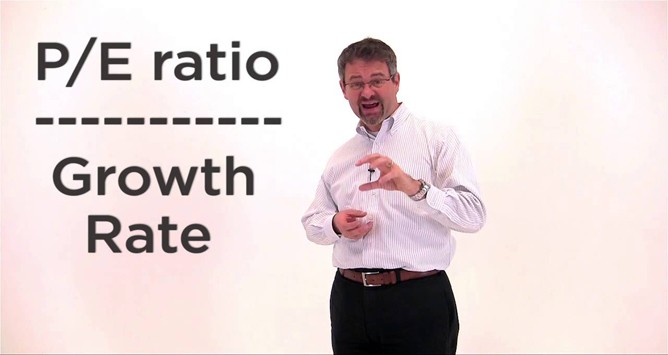Understanding the PEG Ratio
Post on: 11 Июнь, 2015 No Comment

We all know how powerful the P/E ratio can be when determining the value of a stock. But the P/E ratio isn’t perfect, otherwise we would all be making money on every transaction. How do you come to terms with Facebook’s P/E of 72 when Apple trades at P/E of 18?
This is where the PEG ratio comes in. The PEG ratio simply stands for Price/Earnings over growth. It takes the P/E ratio one step further by factoring in how fast a company is growing. If you compare Apple and Facebook stock, you’ll find that both actually have a PEG ratio of about 1.2. Maybe they’re not so different after all!
But before we get into how to use the PEG ratio, let’s do a quick refresher course on the P/E ratio.
Understanding the P/E Ratio
The P/E ratio is simply the current share price over the latest earnings per share. One way to think about this is the amount that you’re paying per dollar of earnings, or profit. If the P/E is 18, you are paying $18 for every $1 that the company makes in profit.
A high P/E typically indicates that the market will pay a premium to obtain the company’s earnings because it believes in the firm’s ability to grow. In essence, the company is expected to “catch up” to its high P/E ratio by growing earnings fast. A low P/E indicates that the market doesn’t expect the company’s earnings to grow much.
Conceptually, if you were to find a company with a P/E of 1, that would mean that the company’s market value is equal to its profits. It would be like paying $100,000 to own a food truck that makes $100,000 in profits per year.
But We All Know P/E Isn’t a Tell All Approach
It’s difficult to use the P/E ratio to compare firms in different sectors. Utilities companies have a fairly low P/E ratio because they are generally stable and slow-growing. Meanwhile technology companies have high P/E ratios because of the industry’s high growth. Another drawback is that the P/E ratio gives you very little information about earnings growth. It’s fairly static, to say the least. It also doesn’t tell you much about dividends or whether or not the company can turn their earnings into hard cash.
This is Where the PEG Ratio Comes In
The PEG is P/E over earnings growth rate. So for example, if the P/E Ratio is 18 and the earnings growth rate is 100%, then the PEG ratio is 0.18.
So what? This reveals that the stock looks cheap. While you’d be paying $18 for every $1 of profit, the profit is actually growing really fast. All things equal, the stock’s P/E ratio would be 9 next year because earnings would have doubled.
If the PEG ratio is 1, then the share is generally presumed to be fairly priced. If the PEG ratio is less than 1, the stock starts to look attractive. If the PEG ratio is way more than 1, the company might be overvalued.
Now if investing were this simple, we would all be millionaires…
Problems With the PEG Ratio
You shouldn’t solely rely on the PEG ratio to make an investment decision. The PEG ratio is based on an earnings forecast that is then used to calculate earnings growth, and we all know how tough (impossible?) it is to predict the futuer. Another fault in the PEG ratio is that it’s based on earnings growth, not sales growth. Companies like $AMZN that prefer to reinvest their free cash flow into the company might have an absurd PEG even though sales are growing.
The PEG ratio also tells you nothing about dividends, so using this ratio to supplement your investment decision works best in low dividend yield stocks. It also tells you nothing about the company’s management, products, economic moats or cash flow. A valuation based on the PEG ratio is very different from a rigorous approach like the DCF model.
Still, we like the PEG ratio as a quick starting point to learn about a company. What do you think of the PEG ratio? Let us know your thoughts.














